X Butiagrus nabonnandii (Mule palm)
Botanical Information
| Family | Arecaceae |
| Genus | x Butiagrus |
| Species | nabonnandii |
| Synonyms | Syagrus x fairchildiana |
| Origin | Occasionally found in the wild in South America, Mule palms are an intergenetic hybrid. They are grown from seeds taken from Butia capitata (Pindo Palm) which have been fertilized with the pollen from Syagrus romanzoffiana (Queen Palm). |
Details
| USDA Hardiness Zone | 8a - 11 |
| USDA Hardiness Ref. | |
| Canadian Hardiness Zone | Requires cold season protection under glass. |
| Canada Hardiness Ref. | |
| RHS Hardiness Zone | H5 - H1c |
| RHS Hardiness Ref. | |
| Temperature (°C) | (-12.2) to above 4.5 |
| Temperature (°F) | 10 - 40 |
| Height | 10 m |
| Spread | 5 m |
| Growth | Fast |
Description and Growing Information
| Shape | Single upright trunk with full canopy. |
| Landscape | Focal or accent points. |
| Propagation | Palms must be carefully propagated by hand cross pollination, germinating the resultant cross bred seeds. |
| Cultivation | Grows best with some shade to full sun in a variety of soils as long as it is well-drained. |
| Notable Specimens | Harry P. Leu Gardens, Orlando, Florida, United States of America. |
| Bark/Stem Description | Single; 30 - 75 cm thick; clean trunk in most older individuals; younger plants have unsplit leaf bases retained on trunk with a heavy weave of thick brown fiber. |
| Leaf Description | Pinnate; 3-4 m long leaves; over 100 leaflets per side per leaf, very closely spaced; leaves mild to moderately 'V'; leaflet droop varies from almost none to over half leaflet length; dull to medium green in colour. |
| Flower Description | A densely branched Inflorescence, 60 cm long, arching and drooping, tan spathe often retained above each inflorescence, flowers light yellow. |
| Fruit Description | Medium green turning orange when ripe; spherical; 2 cm in diameter. |
| Texture Description | Slightly curved trunks have coconut-like appearance. |
Photographs
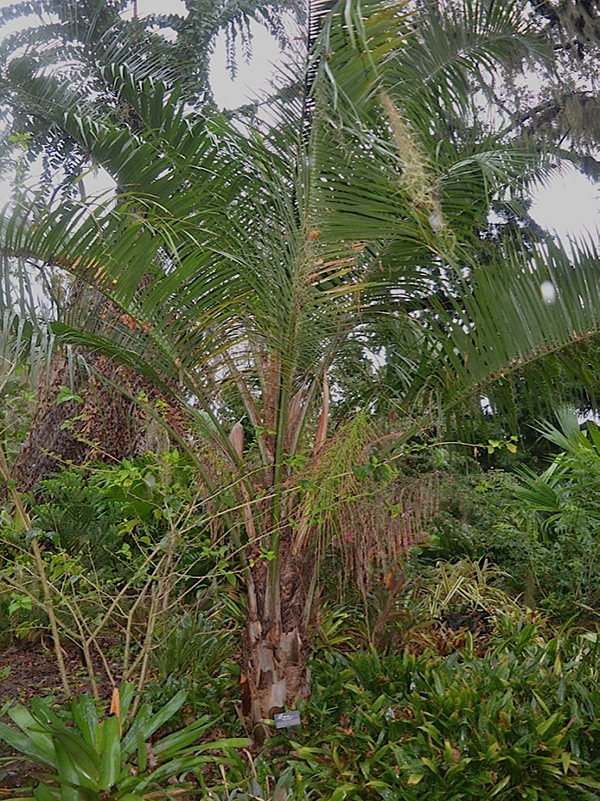
x Butiagrus nabonnandii, form, Harry P. Leu Gardens, Orlando, Florida, United States of America.
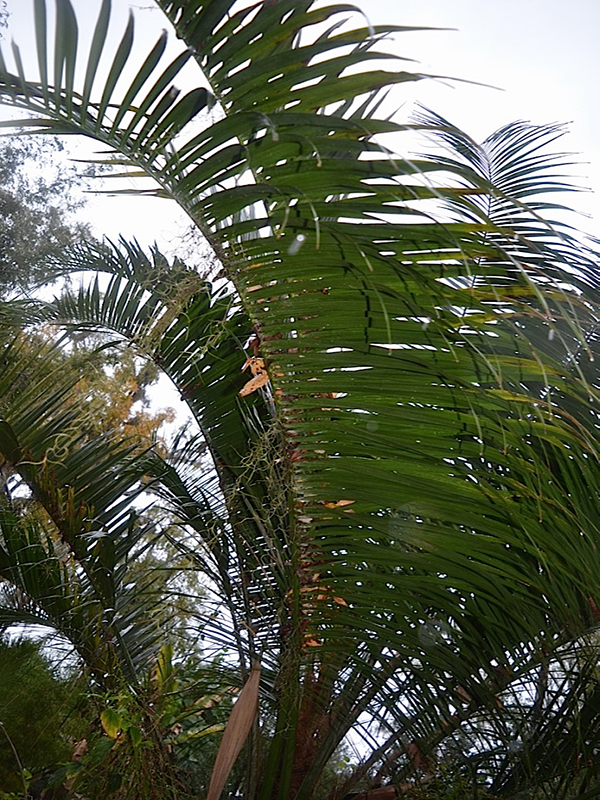
x Butiagrus nabonnandii, leaf, Harry P. Leu Gardens, Orlando, Florida, United States of America.
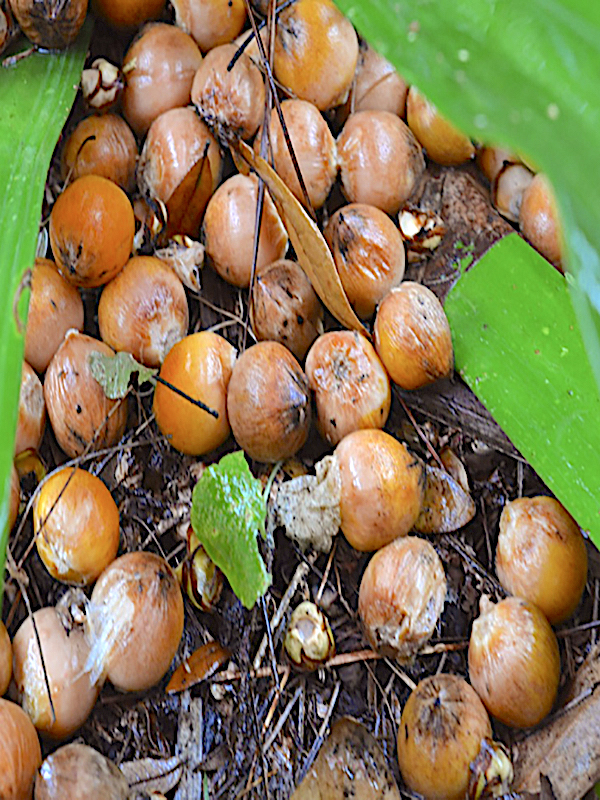
x Butiagrus nabonnandii, fruit, Harry P. Leu Gardens, Orlando, Florida, United States of America.
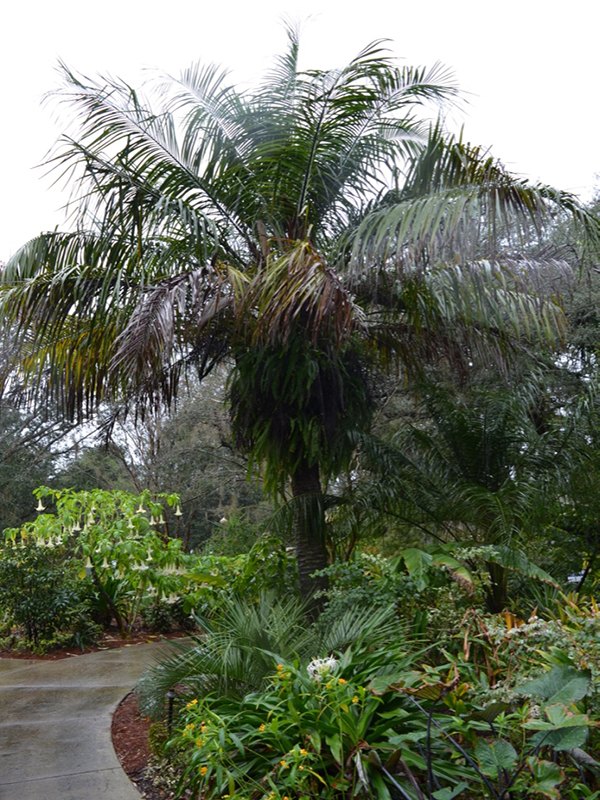
x Butiagrus nabonnandii, form, Harry P. Leu Gardens, Orlando, Florida, United States of America.
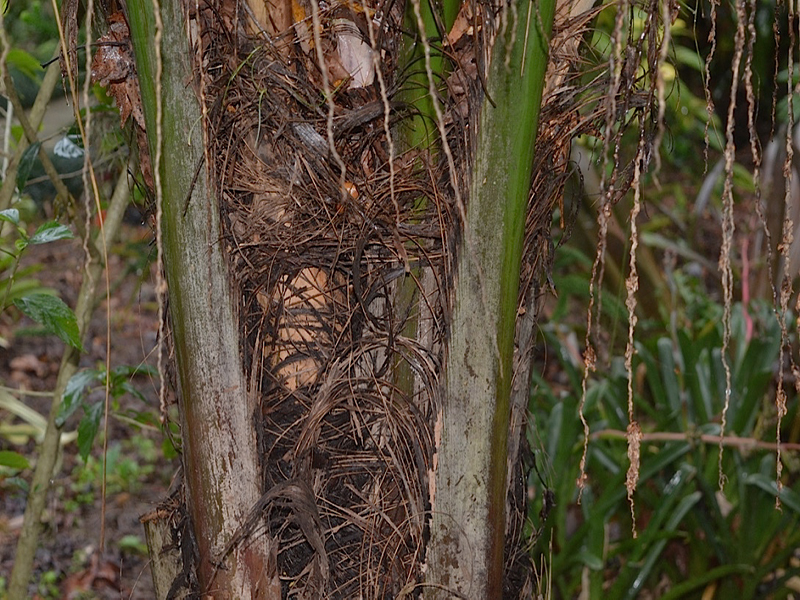
x Butiagrus nabonnandii, bark, Harry P. Leu Gardens, Orlando, Florida, United States of America.